- News
- Reviews
- Bikes
- Accessories
- Accessories - misc
- Computer mounts
- Bags
- Bar ends
- Bike bags & cases
- Bottle cages
- Bottles
- Cameras
- Car racks
- Child seats
- Computers
- Glasses
- GPS units
- Helmets
- Lights - front
- Lights - rear
- Lights - sets
- Locks
- Mirrors
- Mudguards
- Racks
- Pumps & CO2 inflators
- Puncture kits
- Reflectives
- Smart watches
- Stands and racks
- Trailers
- Clothing
- Components
- Bar tape & grips
- Bottom brackets
- Brake & gear cables
- Brake & STI levers
- Brake pads & spares
- Brakes
- Cassettes & freewheels
- Chains
- Chainsets & chainrings
- Derailleurs - front
- Derailleurs - rear
- Forks
- Gear levers & shifters
- Groupsets
- Handlebars & extensions
- Headsets
- Hubs
- Inner tubes
- Pedals
- Quick releases & skewers
- Saddles
- Seatposts
- Stems
- Wheels
- Tyres
- Health, fitness and nutrition
- Tools and workshop
- Miscellaneous
- Buyers Guides
- Features
- Forum
- Recommends
- Podcast
£1,099.00
VERDICT:
Highly impressive carbon road bike that offers exceptional value, and you can tweak the spec to your own taste and budget
Weight:
9,690g
Contact:
At road.cc every product is thoroughly tested for as long as it takes to get a proper insight into how well it works. Our reviewers are experienced cyclists that we trust to be objective. While we strive to ensure that opinions expressed are backed up by facts, reviews are by their nature an informed opinion, not a definitive verdict. We don't intentionally try to break anything (except locks) but we do try to look for weak points in any design. The overall score is not just an average of the other scores: it reflects both a product's function and value – with value determined by how a product compares with items of similar spec, quality, and price.
What the road.cc scores meanGood scores are more common than bad, because fortunately good products are more common than bad.
- Exceptional
- Excellent
- Very Good
- Good
- Quite good
- Average
- Not so good
- Poor
- Bad
- Appalling
The Ribble R872 Disc Tiagra is a carbon fibre road bike that's built to a sportive-friendly geometry and it offers a much higher performance than you've a right to expect at this price. Plus, there's the bonus that you can tweak the spec to suit your taste and budget.
- Pros: Great value, excellent frame, ability to tweak the spec
- Cons: Geometry will be too aggressive for some
The feature that surprised me most about the Ribble R872 Disc's ride is the front end stiffness. In this respect it feels like a bike costing way more than this. Haul on the alloy handlebar and everything is absolutely rock solid. You might not pull out your best Mark Cavendish sprint all that often but you'll appreciate the rigidity when climbing out of the saddle and also when cornering hard – you can really chuck this bike through the bends.
The frame is almost as stiff elsewhere, giving the feeling that none of your energy is going to waste. It really is hugely impressive for the money, made with T700 carbon fibre and boasting a tapered head tube, neat internal cable routing and compatibility with Di2 electronic shifting – indeed, Ribble will supply the bike built up with Shimano Ultegra Di2 if you like. The fork is full carbon too.
The R872 Disc is part of Ribble's Endurance range but 'endurance' means different things to different people, so let's deal with that a sec. By the standards of most endurance bikes, this frame is built to quite an aggressive geometry. It's suitable for sportives, for example, and other long, pacy rides, but the setup isn't as relaxed as you'll often find elsewhere.
I've been riding the large sized version with a stack height of 577mm and a reach of 394mm. For comparison, the 58cm version of Trek's endurance road bike, the Domane, has a 611mm stack and a 380mm reach, so the R872 Disc offers a riding position that's considerably longer and a lot lower – although, as ever, there's scope to adjust things via jiggery-pokery with headset spacers and different stem options. The R872 Disc's geometry is actually closer to that of Trek's Madone race bike, where the 58cm model has a 581mm stack height and a 396mm reach.
Anyway, that's enough talk of Trek and numbers. The bottom line is that the R872 Disc sits towards the racier end of the endurance bike spectrum. That's not to say that you're going to spend the whole time gnawing your handlebar but Ribble hasn't slung a super-long head tube on here. Make sense? Efficient but not extreme. Let's move on...
> Buyer's Guide: 22 of the best sportive and endurance bikes
Coming in at 9.69kg (21lb 6oz), the Ribble R872 Disc isn't mega-light, but this is a £1,100 disc brake bike we're talking about so the UCI's 6.8kg minimum weight limit is always going to be a distant horizon. If you're bothered you could always go through Ribble's web-based Bike Builder system (see below) and select lighter components. You could save about 250g by switching the Mavic Aksium Disc wheels for Ksyrium Elites, for example, and drop over 100g by swapping to a carbon fibre handlebar, and so on. That's all going to cost you more money, of course...
Personally, I wouldn't be motivated to save a few hundred grams. It's not that important. You could end up spending a lot more money for little benefit. In this build, the Ribble R872 Disc might not be the fastest accelerating bike I've ever ridden around these parts but it's far from being a layabout. In fact, I didn't give the weight a second thought – good or bad – out on the road.
The sloping top tube means you'll almost certainly have a lot of slim (27.2mm diameter) seatpost extending out of the frame and able to flex a little.
You can also choose your saddle from a wide range on offer. I got on fine with the Prologo Kappa RS default option – the semi-round shape suited me well, as did the medium depth of padding – but if you can find a few quid down the back of the sofa you can have Ribble put on something from Fizik.
Wheels and tyres
The tyres will also influence comfort. You have the choice of three models from Continental in either 25mm or 28mm width, or Challenge's Paris-Roubaix in 27mm. Our review bike came fitted with 25mm Conti Ultra Sports and, despite that stiffness I mentioned up top, I didn't feel it was crying out for 28s. They're an option if you'd like to put a larger cushion of air between you and the road, though, and there will still be enough room to fit SKS mudguards via the frame/fork eyelets.
Speaking of the tyres, I was unlucky with punctures here. Ultra Sports aren't the most high-end tyres in Conti's range but they're a decent, workmanlike choice and I've got on well with them a million times in the past.
This time... not so much. Heaven knows what was going on but I had about a fortnight when I spent a lot of time on grass verges swapping inner tubes and cursing (no, before you ask, nothing was stuck in the tread). I'll put that down to bad fortune, though, because those dark days seem to be behind me.
If you're feeling flush you could upgrade to Gatorskins (an extra £50) which come with Conti's PolyX Breaker for extra puncture protection, and what's called a DuraSkin external mesh that's designed to help prevent cuts, punctures and abrasions. I'd certainly consider it, especially for winter riding, although stumping up an extra £85 for the excellent GP5000s might be a step too far on a bike of this kind.
As mentioned previously, the wheels are Mavic Aksiums. They might be the entry-level option from the French brand but we've learnt over the years that they're a strong proposition for the money, combining a solid build with a decent weight, and they provided their usual hassle-free performance throughout testing.
You could go for Mavic's Ksyrium Elite Disc WTS wheels instead. In our experience these are bombproof but they'll add a whopping £450 to the price, which is a helluva lot on a £1,100 bike.
Groupset
The 10-speed Shimano Tiagra groupset performed superbly throughout testing. I won't go into much detail here but it's great stuff and excellent value.
We didn't get Tiagra brakes, though. Instead, this build comes with Tektro MD510 cable-operated disc brakes operating on 160mm rotors.
After the initial bedding in, these performed well. You'll sometimes hear people say that cable-operated disc brakes aren't much cop, and you'll certainly get a better performance if you're able to stump up the extra cash for the Shimano 105 groupset, complete with hydraulic disc brakes; that's to be expected. On the other hand, these pack a decent bite and the fact that they're disc brakes, with the braking surface positioned away from the road, means they're less affected by wet conditions than rim brakes.
Altering the cable tension via inline adjusters is simple too and, of course, you'll never have to bleed them, whereas hydraulic disc brakes might require the learning of some new maintenance skills. Don't get me wrong, if money isn't a consideration you'll almost certainly plump for hydraulic disc brakes, but these won't let you down. They didn't squeal during testing either, which is a bonus.
Build a bike
I mentioned Ribble's Bike Builder earlier, and it's a lovely thing (you'll have seen similar elsewhere). Rather than offering a single bike build, take it or leave it, Ribble allows you to tweak the spec from a range of options.
You toddle along to Ribble's website and click on a bike that interests you. Then you have the choice of accepting a suggested version or going with a custom spec. Ribble gives you default options but you can go in and change the frame colour, the groupset, the wheels, and everything else. You select what you want and move on to the next step, Bike Builder totting up the price as you go.
As well as selecting the model of component, you can choose the size where relevant: crank length, stem length, handlebar width, and so on. You can also add extras like mudguards (£45) and even a custom headset cap from Kapz (£25).
Value
The £1,000 Boardman SLR 8.9 Carbon that we reviewed last year is a rim brake bike that's a fairly similar proposition to the R872 Disc. This bike has an excellent carbon frame, a Shimano Tiagra groupset and Boardman's own wheels, and it comes at a very good price.
> Buyer's Guide: 11 of the best £1,000-£1,500 road bikes
> Buyer's Guide: 12 of the best Tiagra-equipped road bikes
The Forme Monyash that we reviewed is more expensive than the Ribble at £1,325 but it also comes with a Shimano Tiagra groupset. It's quite a different bike, though, in that it has hydraulic (rather than cable-operated) disc brakes and 32mm tyres, and it's built around an aluminium frame. The R872 Disc is more than 700g lighter and represents better value for money. In fact, taking the market as a whole, the Ribble is hard to beat for the money.
Conclusion
Overall, the Ribble R872 Disc offers an exceptional carbon fibre frame that's suited to tackling long rides at pace, and a strong components package that you can adjust to your requirements. It has to be a contender if you're after a sportive-style road bike that offers high value for money, especially if you want something that's upgradable over time.
Verdict
Highly impressive carbon road bike that offers exceptional value, and you can tweak the spec to your own taste and budget
road.cc test report
Make and model: Ribble R872 Disc Tiagra
Size tested: Large
About the bike
List the components used to build up the bike.
Frame - Full Carbon.
Forks - Full Carbon Monocoque.
Shifters - Shimano Tiagra 4700 10 speed.
Brakes - Tektro MD510 Mechanical Disc.
Chainset - Shimano Tiagra 4700 2 x 10 Speed 34-50T.
Bottom Bracket - Shimano BB-RS500 BSA.
Cassette - Shimano HG500 11-32T.
Chain - Shimano HG54 10 Speed.
Rotors - Shimano SM-RT10 CL 160mm.
Front Derailleur - Shimano Tiagra 4700 Braze On.
Rear Derailleur - Shimano Tiagra 4700 Medium Cage.
Wheels - Mavic Aksium Disc Clincher, 12mm Bolt Thru-Axle.
Tyres - Continental Ultra Sport 2 Rigid 700x25c, Black.
Bars - Level 1 6061 Alloy, Black.
Stem - Level 1 6061 Alloy, Black.
Bar Tape - Level Cork Ribbon, Black.
Seatpost - Level 1 6061 Alloy 27.2mm, 350mm, Black.
Saddle - Prologo Kappa RS, Black.
Tell us what the bike is for and who it's aimed at. What do the manufacturers say about it? How does that compare to your own feelings about the bike?
Ribble says:
The latest iteration of our highly successful and test winning R872 (Winner of Cycling Weekly and Cycling Plus 'Best on Test' Awards). The versatile 'sportive' geometry results in a bike equally well suited to epic century rides and fast commutes.
The R872 Disc has a versatile 'sportive' geometry which results in a bike equally well suited to epic century rides and fast commutes. Flat mount disc brakes ensure, powerful, modulated stopping power in all weather conditions. With its precision handling, stiffness and stability this is also an excellent choice for those wishing to dip their toe into the world of road racing or simply those looking for an agile and nimble road bike.
Designed in house here at Ribble HQ in Lancashire and expertly hand crafted from carbon this stylish and lightweight machine is built to offer you the perfect combination of a high-end performance road bike but with a slightly more relaxed 'sportive' geometry. The shape and dimensions of each tube have been carefully selected to offer you the most compliant ride possible for those epic rides yet not lose the bikes agility.
The sleek profiled tubing offers a perfectly blended balance between high-end performance and styling. Internal cable routing has been incorporated within the design to both improve the lines of the bike and also to keep the cables out of the elements. This in turn ensures that the bike is more streamlined which will therefore also make you faster and climb better than ever before! We have made various changes to the previous R872s design to achieve an improved ride feel, these include;
An oversize profile, tapered down tube for improved torsional stiffness and power transfer.
A dropped seat stay design for vertical compliance and vibration absorption enhancing comfort.
An aero profile carbon bladed fork for precision steering.
A tapered head tube offering improved front end stiffness.
Disc brakes for powerful, modulated braking in all conditions.
The chainstays have been lengthened slightly to provide extra stability.
Enhanced tyre clearance for additional comfort and grip.
Internal cable routing for cleaner lines and protection for the cables.
The tried and tested threaded bottom bracket design for increased durability.
Where does this model sit in the range? Tell us briefly about the cheaper options and the more expensive options
Ribble offers the R872 Disc in three default builds based – in ascending order – on Shimano's Tiagra, 105 and Ultegra groupsets. There's also an R872 Grand Tour Edition, which uses the same frameset but in a limited edition finish.
You can take any of the default builds and adjust them using Ribble's web-based Bike Builder system. If you'd prefer a handlebar that's carbon fibre rather than aluminium, for instance, you see what's on offer and click on the option you want. You can also make changes to things like crank and stem length, handlebar width, and so on. It's hard to imagine a simpler system of tweaking the spec.
Frame and fork
Overall rating for frame and fork
9/10
Tell us about the build quality and finish of the frame and fork?
On a £1,100 bike, you're laughing! Both the frame and the full-carbon fork are exceptionally good. The teal finish is pretty special too.
Tell us about the materials used in the frame and fork?
The frame is T700 carbon-fibre (T700 is from Toray).
The fork is full carbon.
Tell us about the geometry of the frame and fork?
The large R870 Disc has a 550mm seat tube, a 565mm top tube and an 180mm head tube. It has a 73° head angle, a 73.5° seat angle, a stack height of 577mm and a reach of 394mm.
The R870 Disc's stack is higher than that of Ribble's Aero 883 Disc aero road bike (565mm) and the reach is a smidge shorter (396mm), giving a more relaxed riding position.
Even so, by endurance bike standards this is still quite an aggressive geometry. Think of the riding position as similar to that of a race bike but with the dials turned down a couple of notches. Ribble has added a bit of height to the front end, but it hasn't gone nuts.
How was the bike in terms of height and reach? How did it compare to other bikes of the same stated size?
See above. One thing to bear in mind is that if you go for the Level 2 Alloy 6061 handlebar or the Level 3 Carbon handlebar, the tops sweep back from the stem clamp at a 6° angle. You might want to compensate for that by going for a longer stem than usual.
Riding the bike
Was the bike comfortable to ride? Tell us how you felt about the ride quality.
The ride quality is good. You can spec a saddle of your choice from a range of options and go for a carbon seatpost if you like. You can also opt for 28mm tyres. I've been riding this bike for weeks and I've never felt uncomfortable.
Did the bike feel stiff in the right places? Did any part of the bike feel too stiff or too flexible?
I was struck by the front end stiffness the first time I got on this bike. The bottom bracket area feels stiff and efficient too.
How did the bike transfer power? Did it feel efficient?
It feels very efficient.
Was there any toe-clip overlap with the front wheel? If so was it a problem?
None, it's missing by a centimetre or so.
How would you describe the steering? Was it lively neutral or unresponsive? Lively side of neutral.
Which components had the most effect (good or bad) on the bike's comfort? would you recommend any changes?
The shell of Prologo's Kappa saddle offers a bit of give and there's a middling depth of padding. You can always choose another saddle from the range on offer. If you feel comfort is lacking you could opt for 28mm tyres and back the pressure off a bit.
Rate the bike for efficiency of power transfer:
9/10
Rate the bike for acceleration:
6/10
Rate the bike for sprinting:
8/10
Rate the bike for high speed stability:
7/10
Rate the bike for cruising speed stability:
7/10
Rate the bike for low speed stability:
7/10
Rate the bike for flat cornering:
9/10
Rate the bike for cornering on descents:
9/10
Rate the bike for climbing:
7/10
The drivetrain
Rate the drivetrain for performance:
8/10
Rate the drivetrain for durability:
9/10
Rate the drivetrain for weight:
7/10
Wheels and tyres
Rate the wheels for performance:
8/10
Rate the wheels for durability:
8/10
Rate the wheels for weight:
7/10
Rate the wheels for comfort:
8/10
Rate the tyres for performance:
7/10
Rate the tyres for durability:
7/10
Rate the tyres for weight:
6/10
Rate the tyres for comfort:
7/10
Go for the 28mm option if you want more comfort.
Rate the controls for performance:
9/10
Rate the controls for durability:
9/10
Rate the controls for weight:
7/10
Rate the controls for comfort:
8/10
Your summary
Did you enjoy riding the bike? Yes
Would you consider buying the bike? Yes
Would you recommend the bike to a friend? Yes
How does the price compare to that of similar bikes in the market, including ones recently tested on road.cc?
The Boardman SLR 8.9 Carbon that we reviewed last year is a rim brake bike that's a fairly similar proposition to the R872 Disc. This bike has an excellent carbon frame, a Shimano Tiagra groupset and Boardman's own wheels, and it comes in at £1,000, a very good price.
The Forme Monyash is more expensive than the Ribble at £1,325 but it also comes with a Shimano Tiagra groupset. It's quite a different bike, though, in that it has hydraulic (rather than cable-operated) disc brakes and 32mm tyres, and it's built around an aluminium frame. The R872 Disc is more than 700g lighter and represents better value for money. In fact, taking the market as a whole, the Ribble is hard to beat for the money.
Rate the bike overall for performance:
8/10
Rate the bike overall for value:
9/10
Use this box to explain your overall score
There's a handful of ways in which this bike doesn't score particularly highly but most of your money is going on the frameset and the groupset and these are both very good, especially for the money. The overall package that you're getting here is exceptional.
About the tester
Age: 48
I usually ride: My best bike is:
I've been riding for: Over 20 years I ride: Most days I would class myself as: Expert
I regularly do the following types of riding: commuting, club rides, sportives, general fitness riding
Mat has been in cycling media since 1996, on titles including BikeRadar, Total Bike, Total Mountain Bike, What Mountain Bike and Mountain Biking UK, and he has been editor of 220 Triathlon and Cycling Plus. Mat has been road.cc technical editor for over a decade, testing bikes, fettling the latest kit, and trying out the most up-to-the-minute clothing. We send him off around the world to get all the news from launches and shows too. He has won his category in Ironman UK 70.3 and finished on the podium in both marathons he has run. Mat is a Cambridge graduate who did a post-grad in magazine journalism, and he is a winner of the Cycling Media Award for Specialist Online Writer. Now over 50, he's riding road and gravel bikes most days for fun and fitness rather than training for competitions.
Latest Comments
- mctrials23 2 sec ago
As i've said before, the police should be sued for a lot of money when someone they have knowingly ignored has gone on to commit a serious crime....
- David9694 7 min 50 sec ago
'Bad parking' blocks firefighters multiple times on same emergency call-out...
- David9694 11 min 36 sec ago
Cambridgeshire boy, 13, crashes Audi into garden wall after taking it from home...
- Adam Sutton 57 min 20 sec ago
Good stuff. Now do it on cycleway C9 through Hammersmith to Chiswick.
- mark1a 1 hour 6 min ago
It's technically allowed but it's not known as "London's Orbital Car Park" for nothing.
- Dogless 2 hours 14 min ago
You're defending bombing hospitals and refugee camps and starving children.
- mattw 4 hours 54 min ago
Used car salesman is a complete attention-seeking plank....
- tubasti 5 hours 11 min ago
I don't know if they're any better, but they's certainly become more boring.
- FionaJJ 5 hours 37 min ago
At risk of being cynical, and stereotyping the police, it's so they don't have to leave the comfort of their panda cars and pursue on foot when...
- andystow 5 hours 47 min ago
But now you don't have to. Allegedly.





































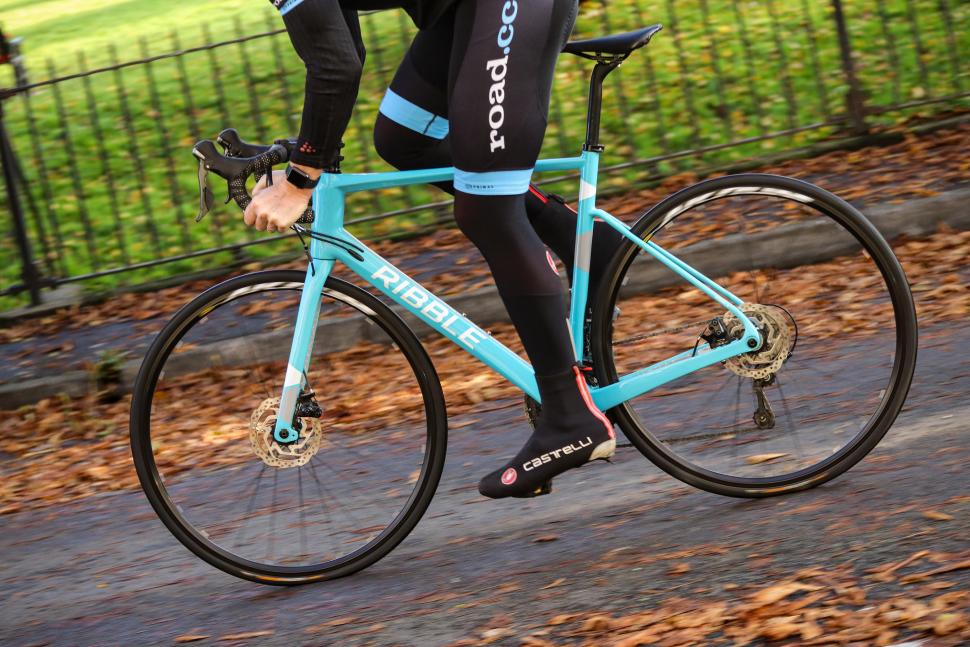

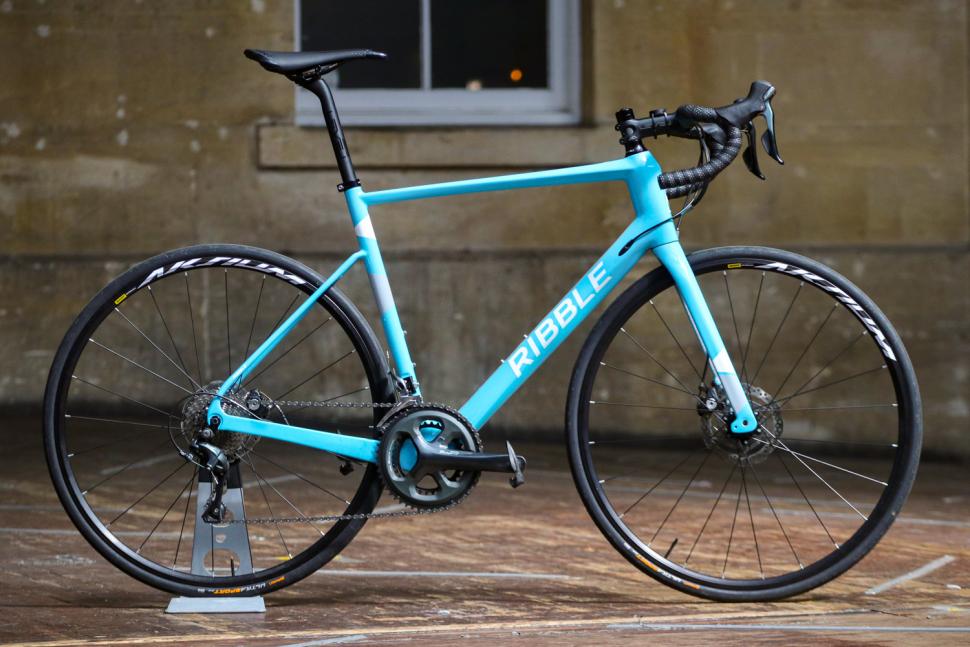

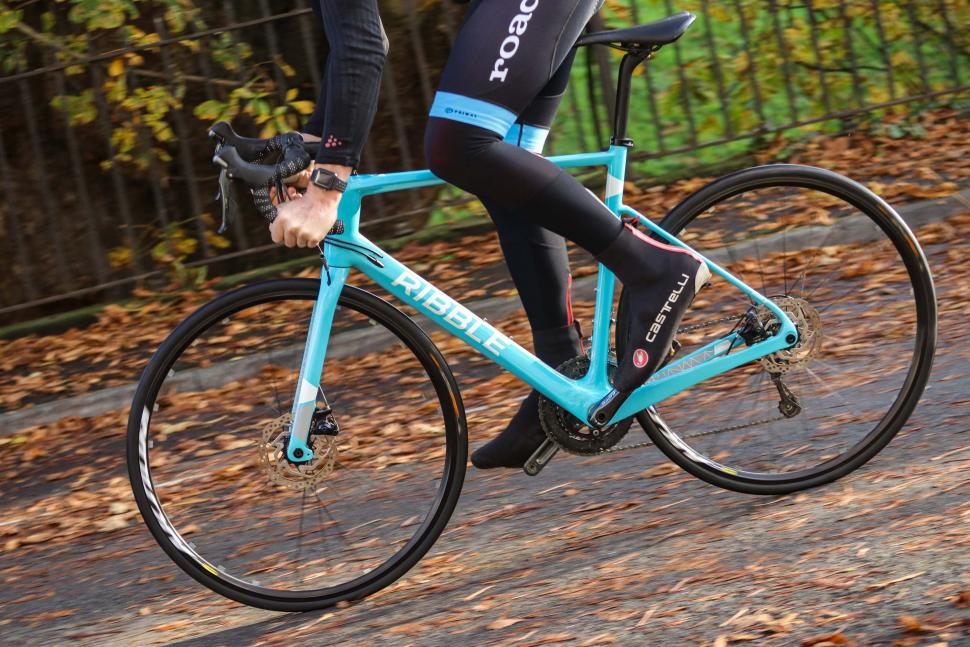
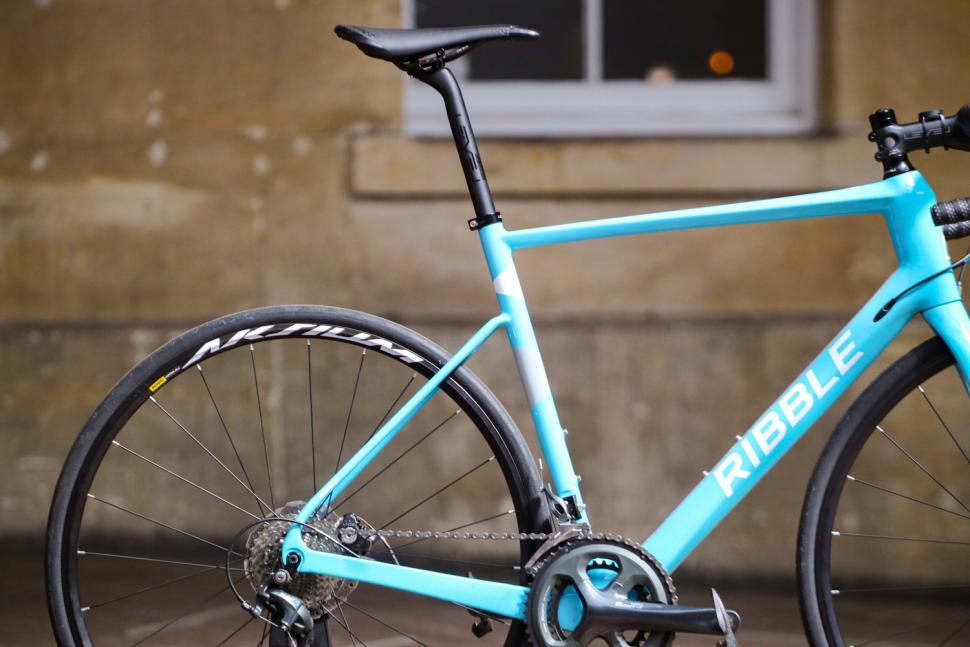


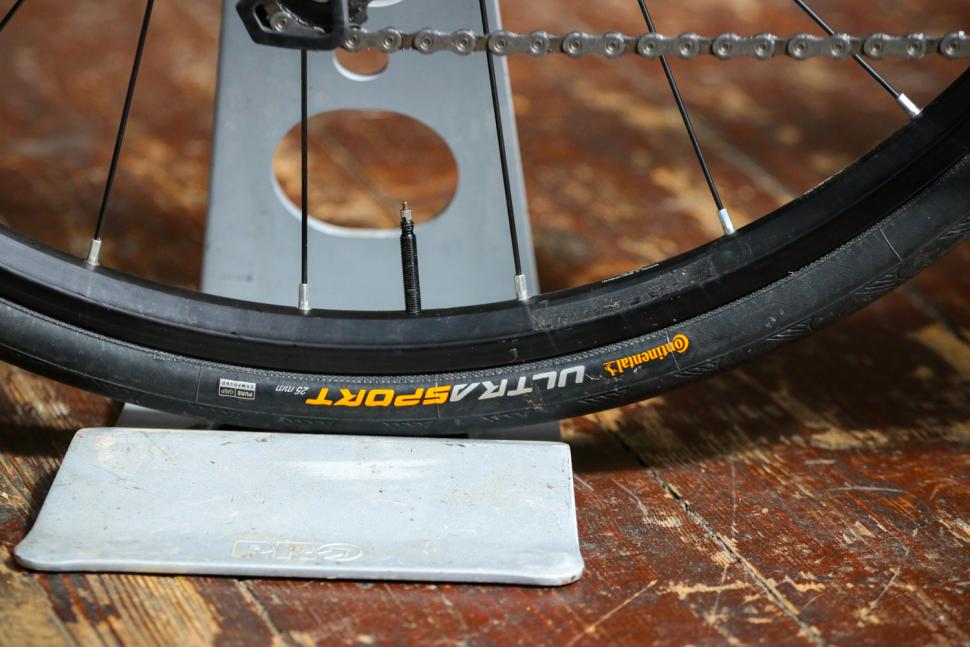



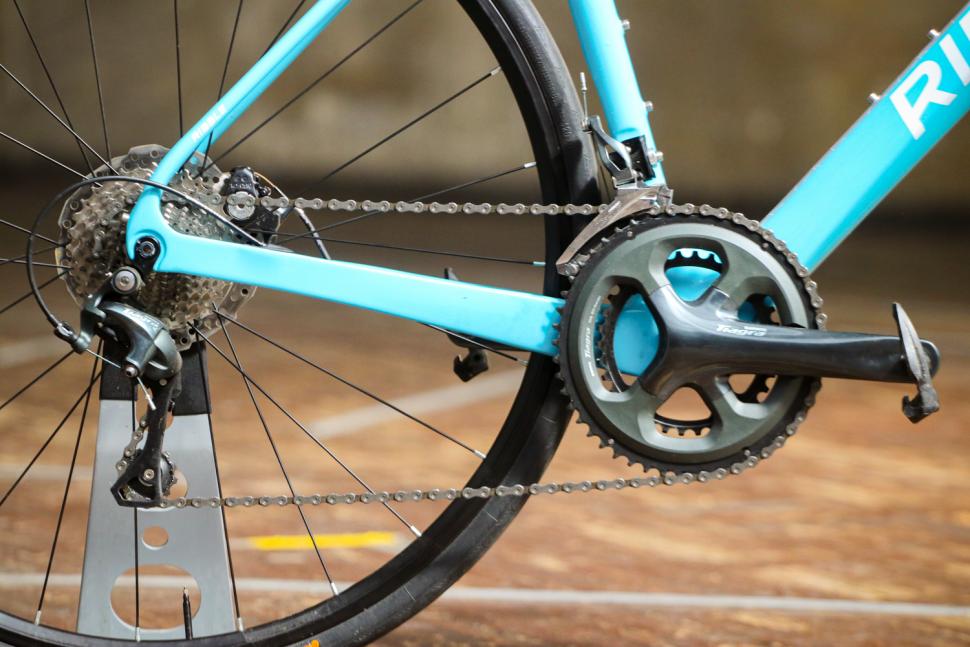


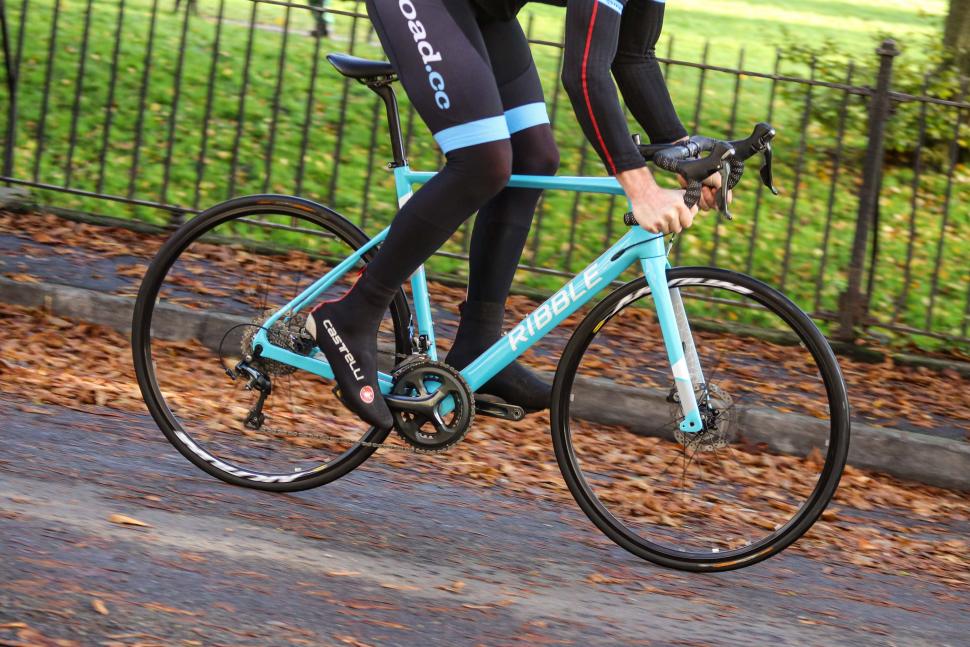
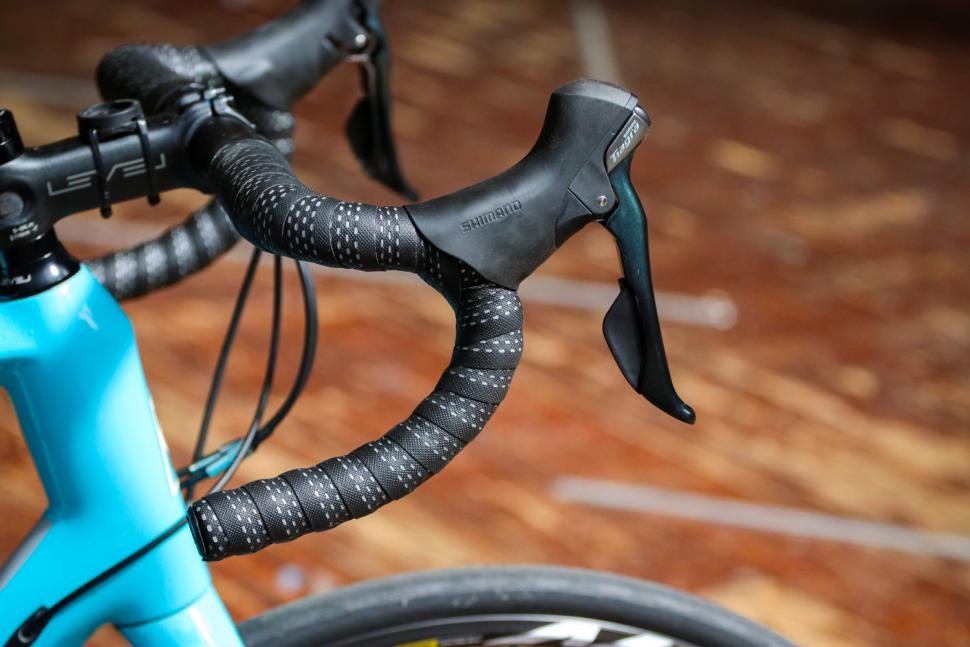
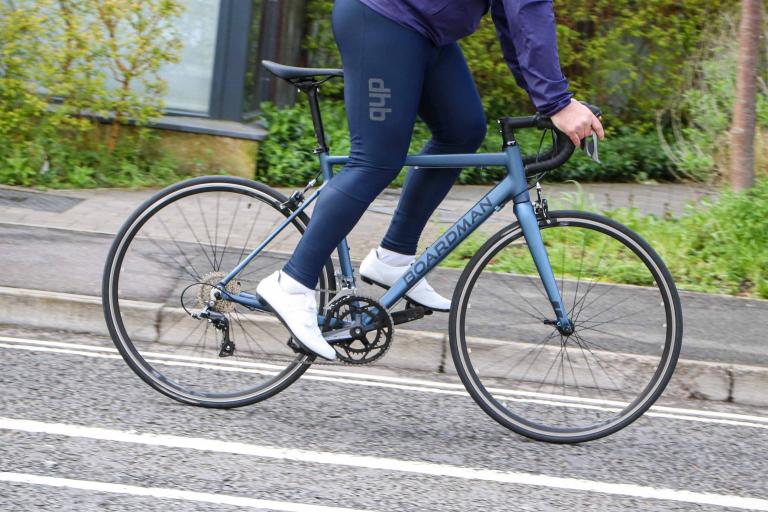
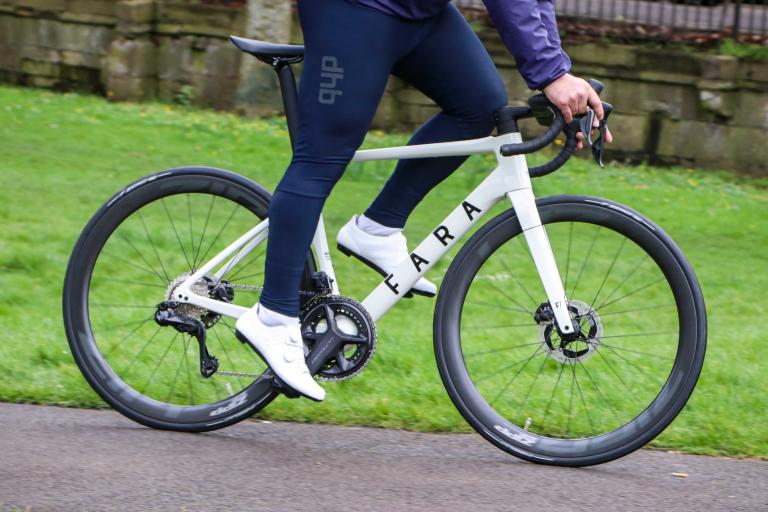
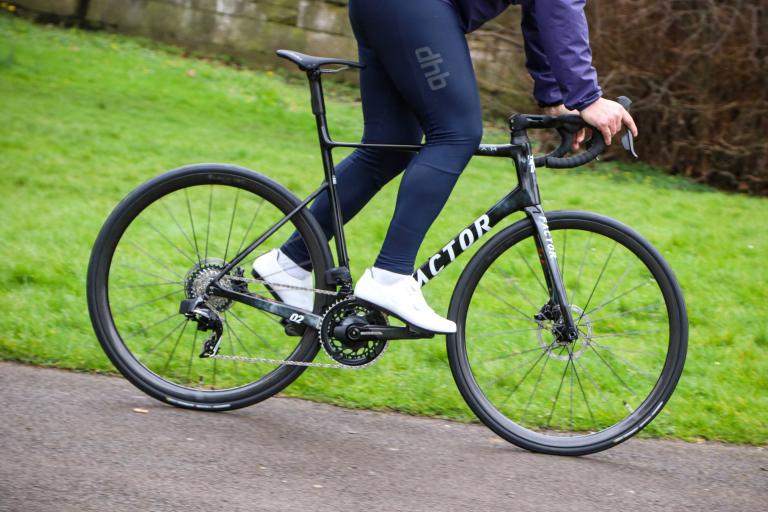
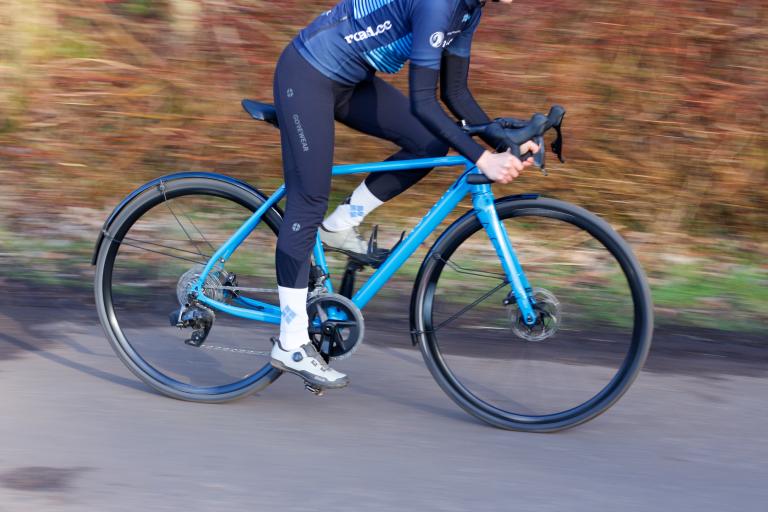
Add new comment
23 comments
My Longstaff 853 Audax winter bike with full mudguards comes in at 9.3kg - I never stop smiling whilst riding!
I've got one of these. I bought it in the summer sale with Ultegra throughout down from £1799 to £1200. It's through cycle to work, so effectivley about £800. For that it is a bargain.
I sold the Ksyriums for about £100 on ebay and replaced them with Cero AR24s at £189, shaving a few 100gs. I got a Fizik Antares off ebay and put it on an old carbon seatpost. The while thing, with pedals, bottle cage and computer comes in at 8.1kg. It's a lovely, lovely bike. It replaced a Condor Squadra scandium alloy/carbon frame with Campagnolo Veloce (from when it was good in the early 2000s) and it's an immediately and obviously superior bike. Light and stiff are the first two impressions. Descending is fabulous. If I have a gripe it's that, even though there are mudguard bosses, I found mudguards so difficult to fit that I gave up and went back to clip-ons.
A couple of years ago I sold a very well used Carrera tdf with tiagra for £200. I daresay an r872 would get you more than £250.
I just don't get this bike at all.
Why would you buy a full carbon disc brake frame with the worst cable disk brakes going, finishing kit that weighs too much, poor wheels & rubber.... unless it comes in under the Cyclescheme friendly £1000 mark?
Even that idea is less relevent now that you can get components on cyclescheme... and if you're buying this to upgrade, then you've effectively payed a fortune for a frameset, resale value of these components is practically nonexistant.
Ribble really ought offer a frameset only option instead of nonsense builds like this.
The resale isn't non existent, a bike pull Tiagra disc is still going to get you easily £250 but we all know that as soon as it comes out the packet/off the production line the resale value is less than retail. How much money retailers can bring in when margins are ridiculously slim on components means selling whole bikes with the mark up on the frameset a big part of a bike shops margin. There's also the fact that there's still a substantial number of people who do now want or do not feel they are able to put a bike together, I don't know anything about the frameset but you can buy open mould frames ten a penny these days.
It's intereesting with regards to weight that these lower range bikes are actually now heavier than even bikes from over 10 years ago yet cost significantly more. Sure you've got inflation/currency changes but the moves to production in China rather than Taiwan to reduce costs further and lower specification components all round to me indicate this is worse value compared to a decade ago.
Remember PX with Ultegra for a grand just a few years ago and certainly nowhere near the weight of this, even my 12 year old Specialized hybrid in naked form is less weighty.
Sure, 2kg is neither here nor there when you take all up weight incl the human on board but it indicates so much more in terms of overall quality and that can have a bearing on the overall ride, due to lower spec components and/or frameset.
Ribble have had some good bikes using their brand name for a fair few years, not saying this isn't a good bike for what it is but is it good VfM, not as good value as previous offerings from them IMO but then that applies across most of the industry from what I have seen even as I said taking into account currency changes and inflation.
Weight affects friction at the ground. Mass is correlated with cross sectional area which affects air resistance. Force applied by the legs will correlate with mass. So mass is appearing everywhere in our f=ma calculation. It's almost like physics is hard when you get beyond point masses on frictionless surfaces.
I think there's a bit of confusion regarding free fall motion and intertial mass here..
Yes, I will apologise for my earlier comment, I was thinking about acceleration due to gravity
Wow, a lot of negative comments - particularly regarding weight - when the review makes it clear that this is a good frame with not particularly light components bolted to it to get to a price point. It would be easy on a bike like this to start shaving weight here and there, but as the review says that comes at a price...
If you compare it to a Canyon Endurace Al Disc Tiagra where they quote the weight is 9.04kg compared to this Ribble which is 9.69kg something is wrong somewhere. How can an aluminium frame with Tiagra weigh less than a carbon frame with Tiagra....?
[/quote]
How can an aluminium frame with Tiagra weigh less than a carbon frame with Tiagra....?
[/quote]
Wheels, tyres, seat pin, handle bars, pedals, inner tubes...Do I need to go on?
"Personally, I wouldn't be motivated to save a few hundred grams. It's not that important"
I'm sorry but I'm back on the winter bike which is 2kg heavier then my summer one and the difference is very noticeable. Definitely grinding up those hills more despite the winter bike having more generous gearing. Average ride speeds are around 2-3kph slower.
Disc brakes, mudguards and wider tyres all help in the winter but they all come with a weight penalty and all contribute to making a bike feel more sluggish. In the winter I'm happy to make that compromise but I'm already looking forward to next spring and riding the summer bike again!
Put your summer tyres on and see if you notice any difference - at least on the flat.
Say you're going up a 2% slope. Increasing bike weight from 7kg to 9kg would slow a 75kg rider putting out 250 watts by about 0.22km/h. Riding up a 25% slope and raising bike weight by the same amount would slow that rider by about 0.1km/h.
Play around with something like this: http://bikecalculator.com/
You can do the same here: https://www.gribble.org/cycling/power_v_speed.html
No combination of rider weight, slope and power output will get anywhere close to accounting for a reduction in speed of 2-3km/h even on the climbs (and extra weight is a slight benefit on the descents). Weight will also affect acceleration, but you get the idea.
If you want to account for a 2km/h reduction in speed by weight alone, the 75kg rider above, putting out 250 watts on a 2% slope, would need to increase his bike weight from 7kg to 24kg. On the flat, he'd need to increase his bike weight to 80kg.
It's easy to check in the real world too. Ride up a climb at a set power. Then add 2kg and ride it again at the same power. The difference won't be anywhere close to 2 or 3km/h. We've done this recently and will probably run a feature on it here on road.cc soon.
Of course, we all love a lightweight bike, but the difference it makes to speed is often overemphasised. Plus – the point that was made in the article – you'll usually have to balance it against increased cost.
https://road.cc/content/feature/227520-lightweight-v-aero-which-best
and here lies the problem. You've tried to add maths to bike feel in this one case, but how does that apply across the Road.cc reviews?
even a newbie would notice the difference in 2 kg between bikes.
For most riders it isn't just about the numbers. A lighter bike just feels so much faster then a bike that's 2 kilo's heavier. Don't underestimate the power of such a feeling: emotion is important.
Really? Who tought you physics?
Hammer and feather in a vacuum ring any bells with you? Weight DOES NOT affect acceleration, yet another example of Road CC staff writing things they have no knowledge about.
The teacher who explained Newton's Second Law to me.......
Force = Mass x Acceleration
So if I put the same force in (maybe on a pedal) to an object that has twice the mass, it turns out I accelerate half as fast.
Who taught you physics?
Weight (or rather mass) does not affect acceleration due to gravity, because the force due to gravity is itself proportional to mass. But it will affect acceleration due to a force that is not itself dependent on the mass being accelerated (e.g. muscle power)
Your last line is a better example of Dunning-Kruger than the example claimed on another current thread.
I'm glad to see some sums in the bike weight debate - I've never been convinced that weight alone had a significant effect on climbing as it is a small percentage of bike+rider (+bottle+tools). The mystery for me however is how this bike can be scored as 9/10 for Power Transfer and yet only 7/10 for climbing. Since we've decided weight doesn't make much difference to climbing then surely Power Transfer is all that's left so this should be a great climber!
(Admission: I just ordered one of these as I live on the edge of the Peak District and am hoping I got the right thing...)
I really want to like this but firstly it's too heavy and also, from what I heard, you cannot fit a 52-36 chainset on this and others (CGR) which rules it out for me.
Looks like a really nice bike. But pretty heavy, I reckon you'd have more fun with a considerably lighter rim brake version.